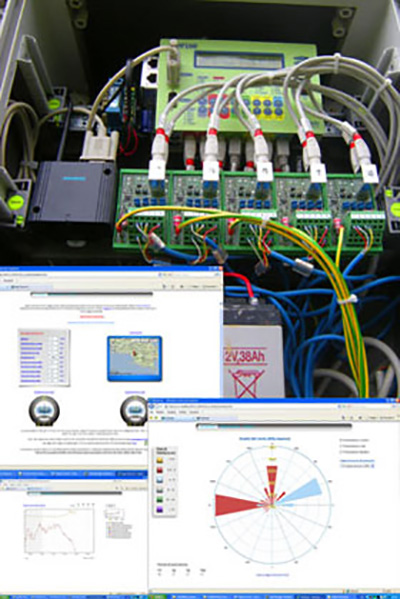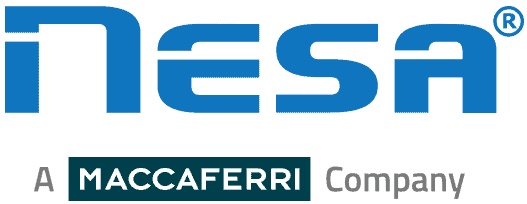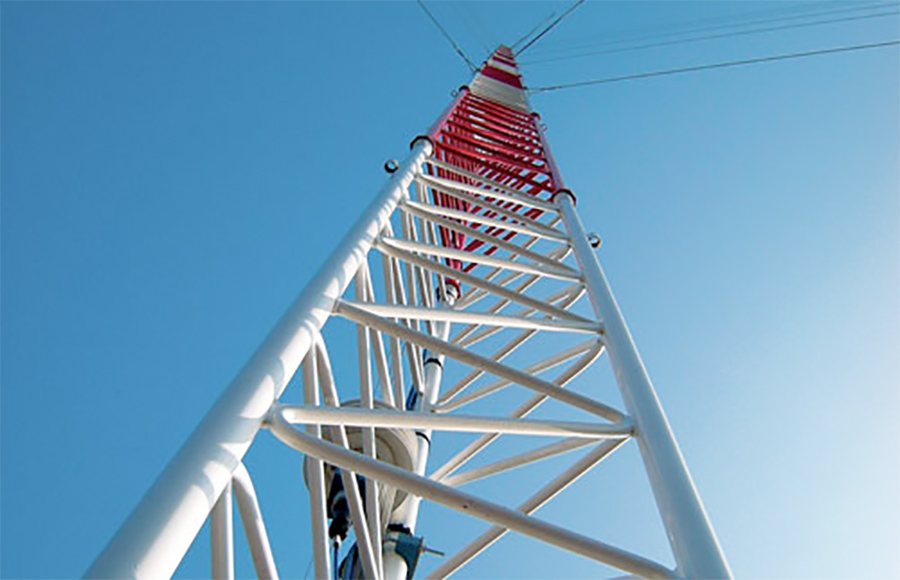Monitoring with anemometric tower
The anemometry, in recent years, has raised a growing interest on a growing market that involves, on the one hand large investors who want to produce and sell power at almost zero cost by installing wind turbines, on the other hand people who are looking for suitable locations for producing wind energy to be submitted to investors, a kind of treasure hunters where the gold is the wind, and the anemometers are the tools for hunting, with dataloggers or, generally speaking, with anemometric towers or eolic towers.
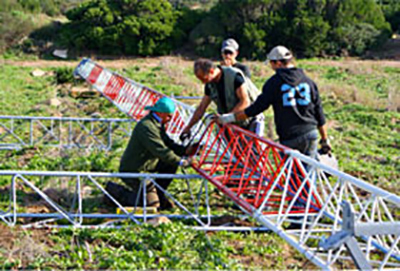
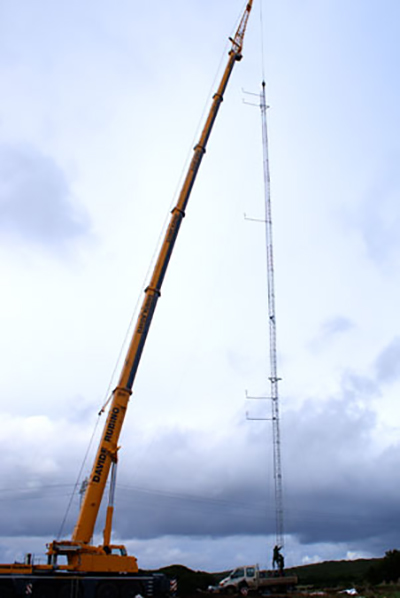
For determining whether a location is suitable or not for the production of wind energy, before you must perform a so-called “anemometric campaign”, a campaign for measuring wind at different heights over period of time ranging from a minimum of six months to more than one year. This operation is done by installing on planned sites towers or poles at different heights, on average from 20 up to 100m, on which some anemometers are mounted for measuring wind speed and direction at different heights, which correspond to the center hub and different lengths of an eventual blade of a possible wind turbine.
In order to get a successful campaign, it is necessary that both the instruments, both the assembly of the tower and the acquisition mode are made in according to determinate rules, mostly in according to IEC 61400-12 norms. More you comply these rules, the reliability of data acquired will be greater, and therefore the possibility to making them bankable an fundable. Nesa acquired a long experience in the field, and as manufacturer, it is able to offer you the expertise and the suitable instruments to obtain the best performance and reliability of the data.
Our staff is able to implement lattices up to over 100m high and poles up to 50m high, installing the equipments with all the necessary features in full compliance with norms, and providing a detailed report of installation, in order to obtain bankable data.
Our equipment that we supply is tested and certified MeasNet. In particular our wind sensors passed the most stringed tests and trials in the major European centers (ex. DEWI in Germany), obtaining excellent results in terms of quality of measurement and linearity (r>0.99998). The datalogger series TMF, among the most performers in the industry, allows you to safely store the data (in encrypted format, as required by the final evaluation bodies) and transmit them via GPRS or other to an FTP area where they are shown in an easy and intuitive way to the customer using web pages.
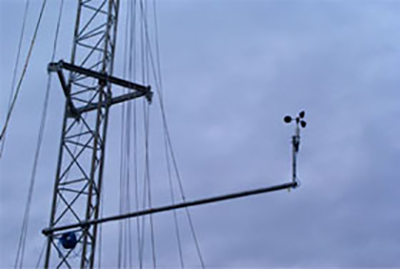
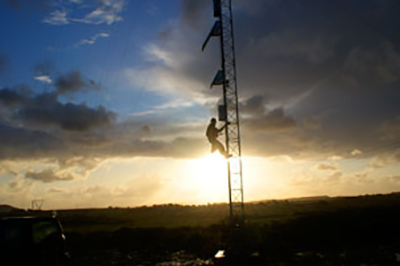
We also offer wind sensors and heated equipment low consumption (<4W@12Vdc) for anemometric campaign at heights. This equipment is one of the few to be accredited and certified MeasNet with the same performances of not heated models.
Our detection stations adopt many technical features that make them among the most reliable in the market, such as protections at more levels of equipment against direct and indirect electrical discharges (catch lighting, discharge arrester barriers, datalogger’s protection).
Special control systems allow you to identify any tampering or theft of solar panel that supplies the equipments, or to track the station (GPS tracker) in case of it is entirely stolen.
Our service is among the most complete in the industry, from providing the single sensor, to the installation on-site, to the management of telephonic traffic, until to insurance against accidental and not accidental damage to the equipment.
We are able to assist the customer until the delivery of the data to the final evaluation bodies, with all the necessary competence that only a company like Nesa, based on consolidated experience and manufacturer of its equipments, can do give. We operate throughout Italy and across Europe.
Since 2010 we also offer the wireless solution for anemometric sensors, which combines the precision of instrumentation which is highly professional, to the easy installation which does not require more than lay long cables from the top of the tower to the base. In addition it naturally preserves the sensors from electrical discharges of each kind. The functional autonomy (>2 years) is beyond the validity of certification MeasNet and the duration of a typical measurement campaign.
